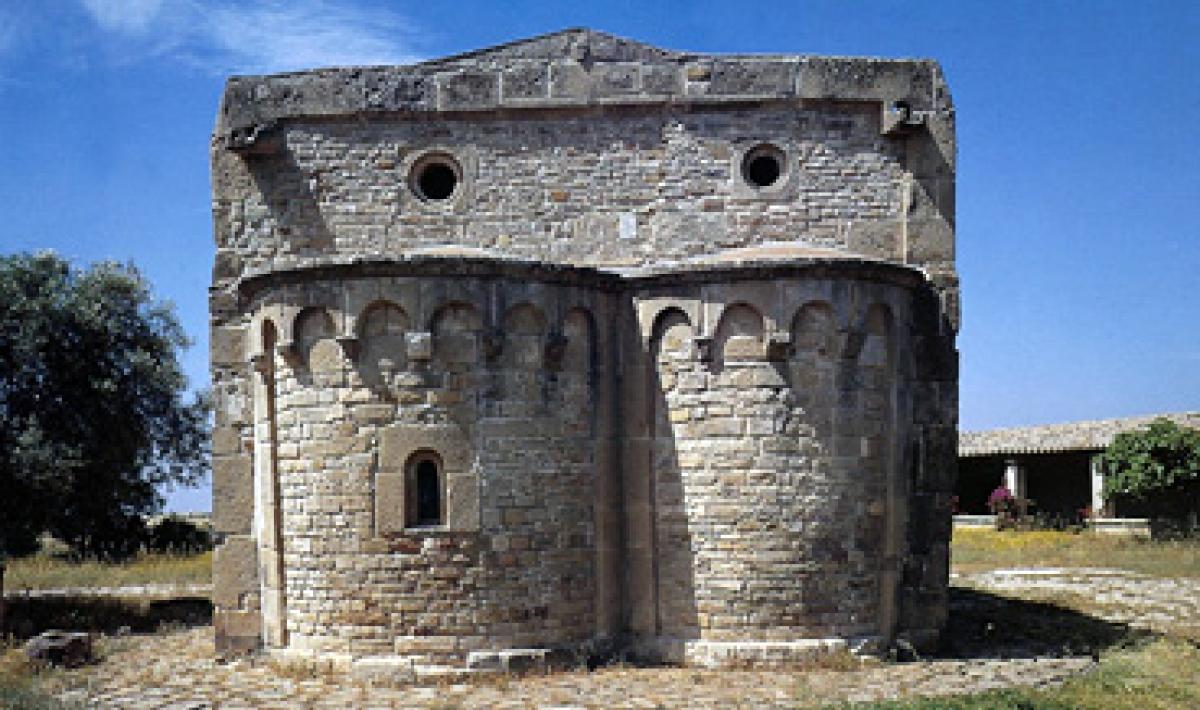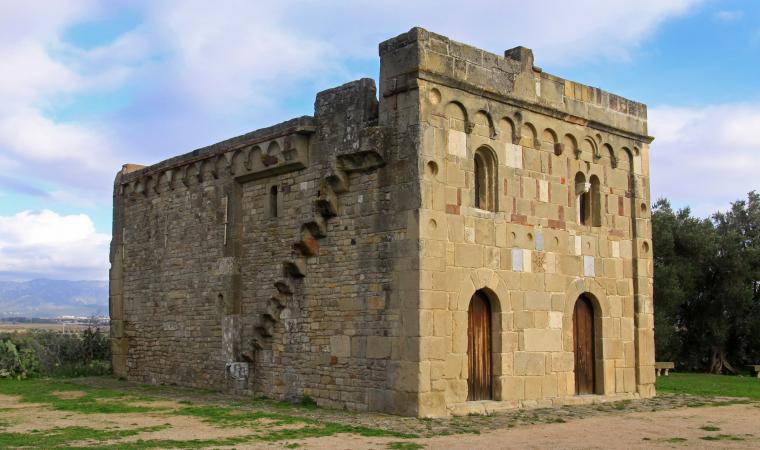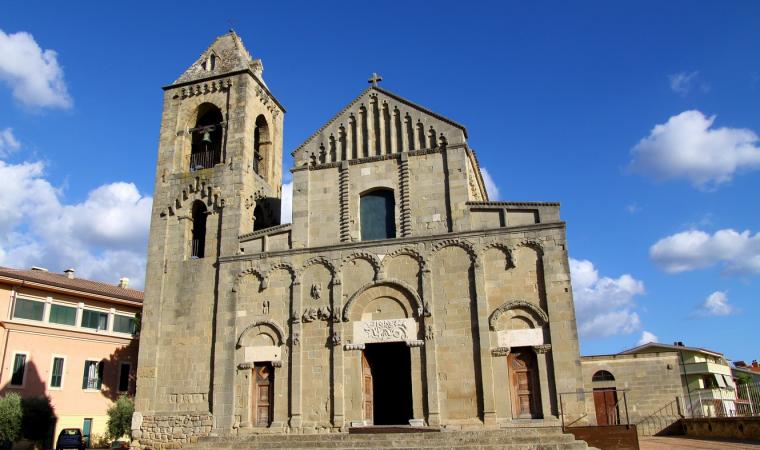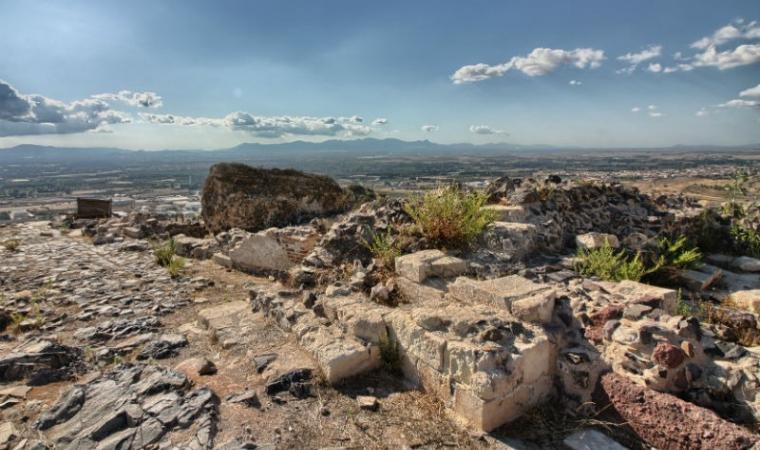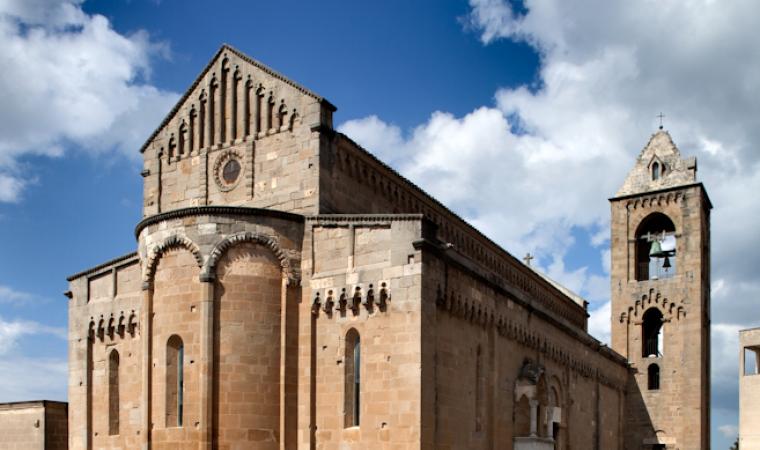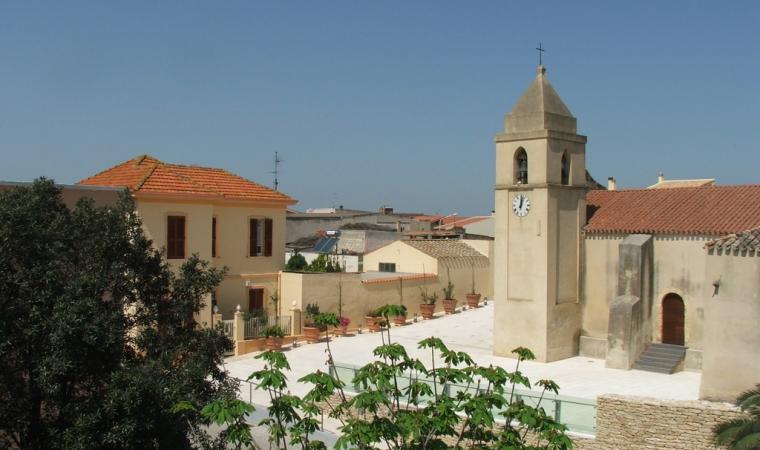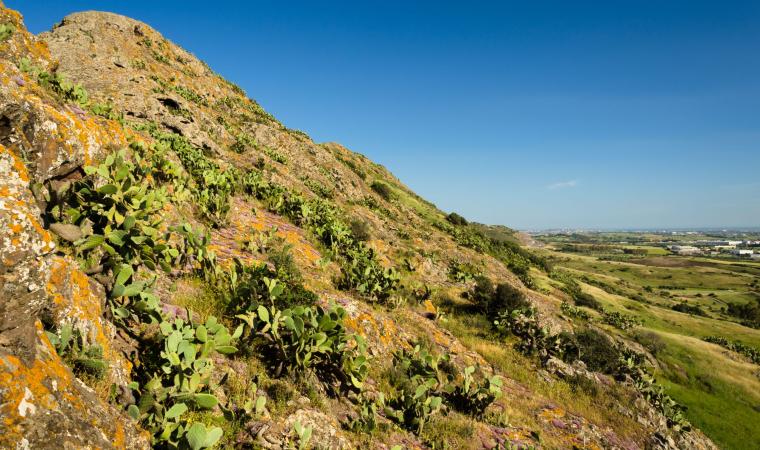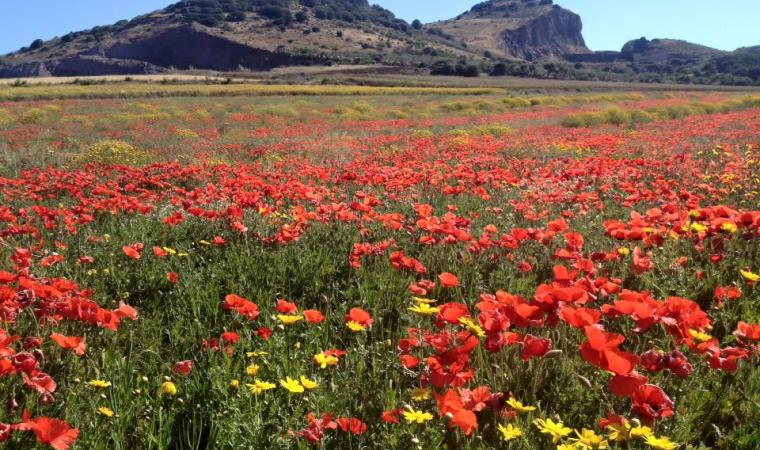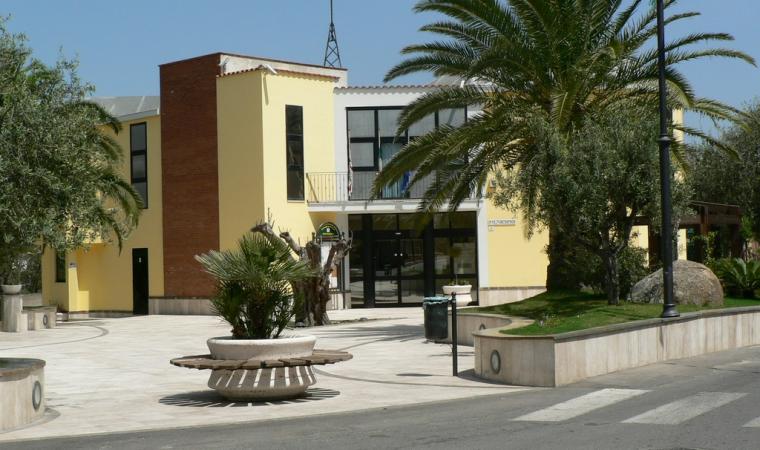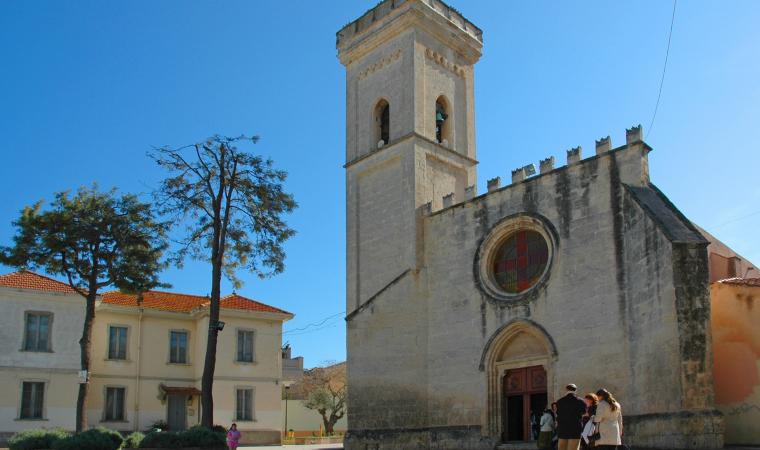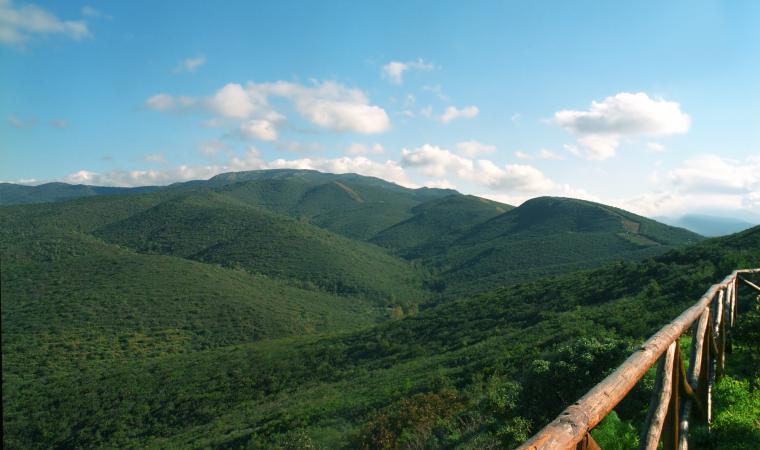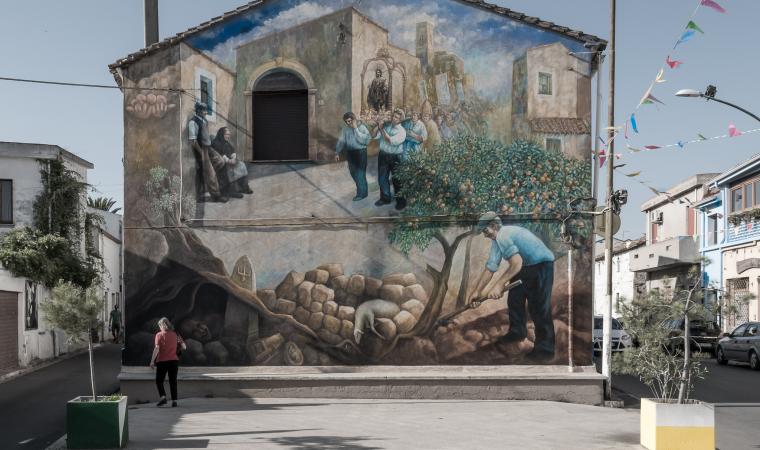It is one of the best preserved medieval Romanesque-Pisan buildings on the island. The church of Santa Maria stands on a slight plateau, surrounded by hills planted with vines and olive groves, three kilometres from the town of Serdiana, in the historic territory of Parteolla, where between the villa of Sibiola prospered from the 12th to 16th century. The rural 'tempietto' was probably built around 1125, made in sandstone by workers called by the Benedictines of the Abbey of San Vittore di Marsiglia, who settled in the southern Campidano area between the late 11th and early 12th centuries and contributed greatly to the development of the rural village. The first written record of Santa Maria di Sibiola is later (1215), and was still the property of the Benedictines of San Vittore in 1338. The church was named a few years later.
Its simple Romanesque façade, restored in 1960-62, is made up of squares of trachyte that create vivid colours. It has two arched portals surmounted by a single lancet window and a mullioned window respectively. The façade is framed by two pilasters that intersect horizontally with a series of nine hanging arches on decorated pediments, which run along the terminal. The pilasters and arches also continue along the sides and the external part of the apses, sculpted with zoomorphic, phytomorphic and geometric motifs. At the centre of the façade you will notice a squared slab with inlays and another with an engraving that recites Domini et Mariae. On the left side there is the access staircase to the roof and the bell tower, of which only the basic segments remain. The stone corbels fixed in the wall recall the steps of the nuraghes. The interior has a rectangular outline divided into two naves of different sizes, both barrel-vaulted, closed with semi-circular apses and divided by four round arches, similar to those of the Basilica of San Saturnino in Cagliari. The lesenes are variously decorated with classicist and Byzantine motifs. The decor is in typical 12th century Romanesque style: a single altar in the main nave surmounted by a wooden crucifix, and a niche with a statue of Saint Anne with an infant Mary in the smaller apse. The original Romanesque holy water stoup is now held in the parish church of Santissimo Salvatore, built between the 15th and 16th centuries in neoclassical and Late Baroque style. Also in the past, the tableau of the Universal judgment was located behind the altar, a 15th century work attributed to the master of Olzai (probably Antonio or Lorenzo Cavaro). The two surviving parts of the painting are kept in the National Art Gallery of Cagliari. One shows the Inferno below with an illustration of the sufferings of the damned, Purgatory with St. Michael the Archangel and the Madonna as a mediator between sinners and Christ, and Paradise with a group of souls and two angels praying at the Saviour's feet surrounded by saints. The upper part shows the 'Annunciation' and sending of the Holy Spirit. The other section depicts saints Matthew and Anthony Abbot and the Adoration of the Magi. A copy of the altarpiece is on display in the council chamber of the Municipality of Serdiana, an area famous for olive growing and, above all, the production of fine wines. The historic center has several well-preserved "courtyard" homes, including the Mura house dating from 1855, the Roberti castle (18th century) with two crenelated towers enclosing the noble residence, and the suggestive church of Sant'Antonio da Padova.

